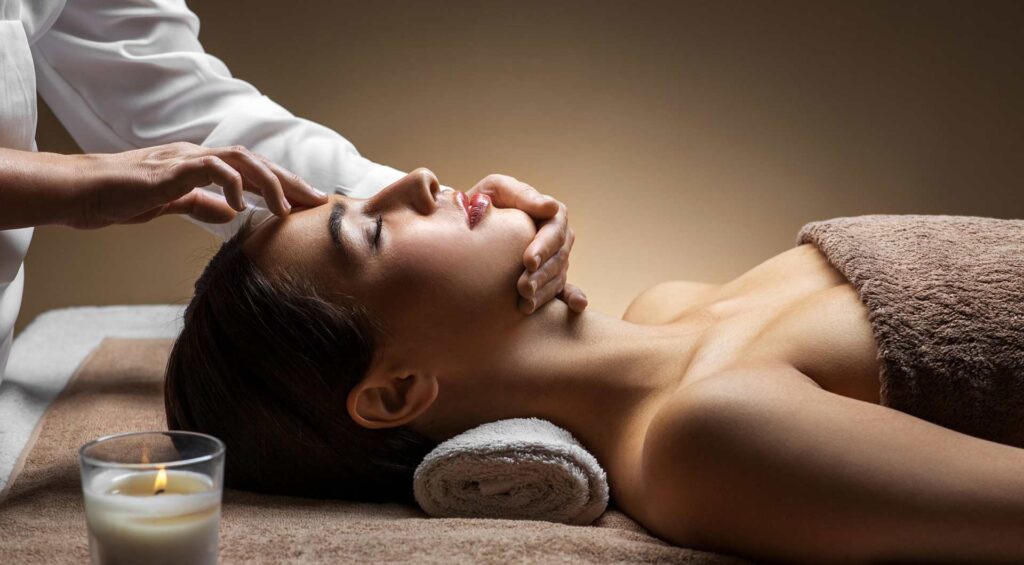TUI NA
INTRODUCTION
TO TUI NA
Tui Na, a practice rooted in Traditional Chinese Medicine (TCM), is an ancient form of manual therapy aimed at restoring the body’s energetic balance.
This technique uses a combination of methods, such as massage, pressure, kneading, acupressure and joint manipulation. Its purpose is to stimulate the circulation of vital energy (Qi) and blood in the body. Tui Na aims to restore harmony to the body’s energy systems and promote natural healing.
TUI NA
ORIGIN
The history of Tui Na goes back to ancient times. Archaeological discoveries have proven its existence in the last period of the Stone Age, around 2700 BC. . Knowledge seems to have gradually consolidated over the centuries.
The term “Tui Na” is made up of two Chinese words: “Tui” meaning “to push” and “Na” meaning “to grasp”. It refers to the manipulation techniques used in this practice.
Tui Na is closely linked to other branches of Chinese medicine, such as acupuncture, Chinese pharmacopoeia and therapeutic exercises (Qi Gong). It is based on the fundamental principles of Chinese medicine, such as the Yin and Yang theory, the energy meridians and the five elements.
The earliest records of Tui Na can be traced back to ancient medical texts like the Huangdi Neijing, or “Yellow Emperor’s Classic of Internal Medicine,” which was written between 2698 and 2589 BC. These writings contain a wealth of manipulative techniques, a variety of clinical applications and in-depth teachings on Tui Na. Tui Na addresses a wide range of health issues, including acute and chronic ailments, psychological disorders, cold and heat illnesses, meridian blockages, and other pathologies.
Over the centuries, Tui Na has evolved and been influenced by regional practices and various schools of Chinese medicine. Specific techniques have been developed to address particular health issues, and training manuals have been created to transmit the knowledge and skills of Tui Na to practitioners.
Today, Tui Na is practiced as part of traditional Chinese medicine in China and around the world. It continues to be used as an effective therapeutic modality to treat a variety of health disorders and promote general well-being.

THE techniques
tui na handling
Tui Na uses some twenty manipulative techniques to stimulate acupuncture points, relax muscles, encourage energy circulation and promote healing. The main ones are :
Pushing (Tui): This technique involves applying gradual, even pressure with the palms, fingers, or thumbs to acupuncture points or specific areas of the body.
Grasping and lifting (Na ): This technique involves gently grasping and lifting muscles and tissues with the fingers, palms or fists.
Rubbing (Mo): This technique involves gently rubbing muscles or painful areas with the palms or thumbs.
Kneading (Rou): This technique involves kneading muscles using circular or pressure movements with palms, fingers, thumbs or even elbows.
Vibrating (Zhen ): This technique involves applying light or rapid vibrations to muscles or acupuncture points using the palms or fingers.
the benefits
of tui na
Tui Na is used in Chinese medicine for several reasons:
-
Restoring energy balance: According to Chinese medicine, energy imbalances in the body can lead to health problems. Tui Na aims to restore the balance of Qi (vital energy) by clearing energy blockages, harmonizing Yin and Yang, and promoting the harmonious circulation of energy in the meridians.
-
Relief of pain and muscle tension: Tui Na employs manipulation and massage techniques to relax muscles, enhance blood and lymph circulation, and alleviate pain. It can be used to treat muscular pain, tension, spasms and disorders of the musculoskeletal system.
-
Stimulate the immune system: Tui Na can strengthen the immune system and enhance the body’s resistance to disease and infection by improving Qi and blood circulation.
-
Treating internal imbalances: Tui Na can be used to treat a variety of internal disorders such as digestive disorders, hormonal imbalances, sleep disorders, respiratory disorders and emotional imbalances. It aims to restore harmony and balance to the body’s internal systems.
-
Disease prevention: Regular practice of Tui Na can help prevent energy imbalances, strengthen the body and maintain overall health. It can be used preventively to promote well-being and prevent illness before it occurs.

some videos...
about TCM massages
Here are some useful videos on massage and acupressure for colds, stress and more.

